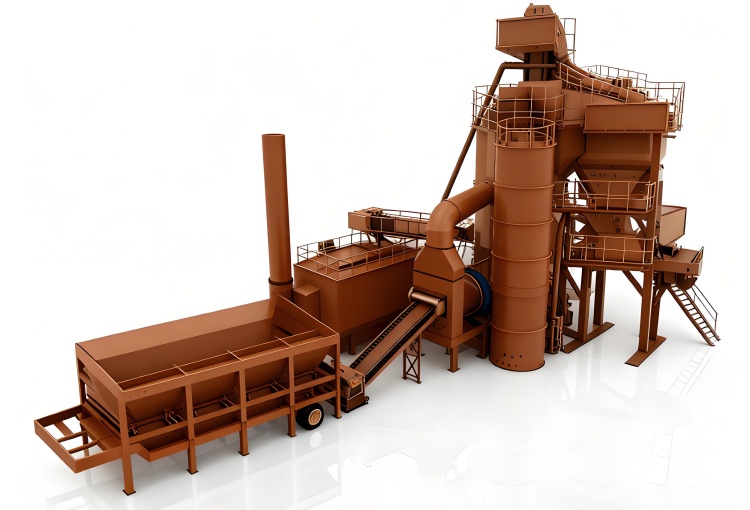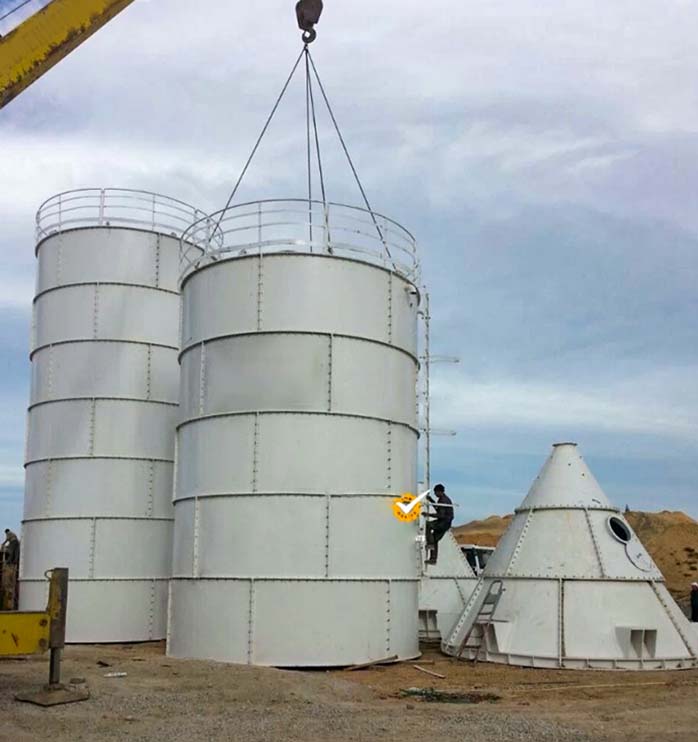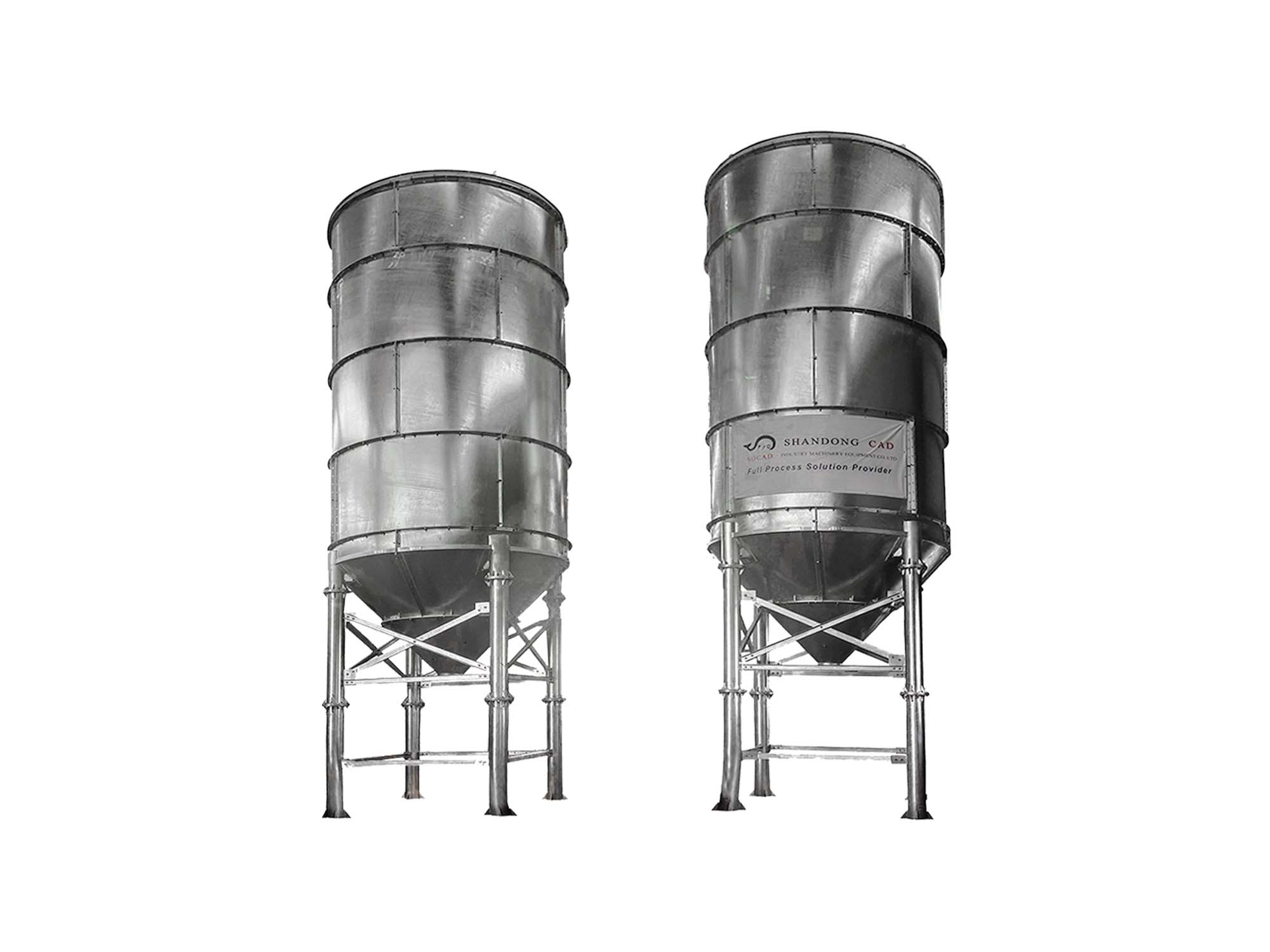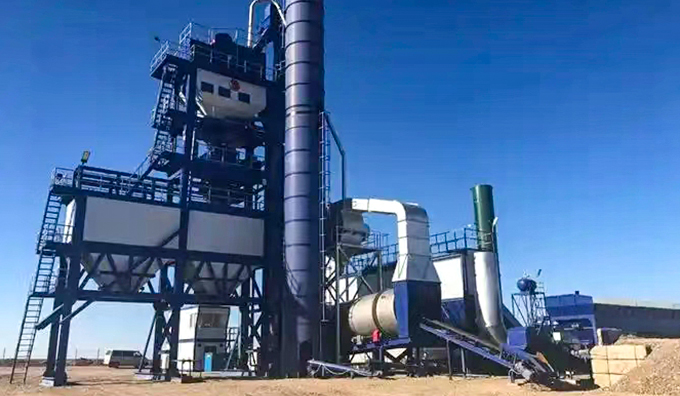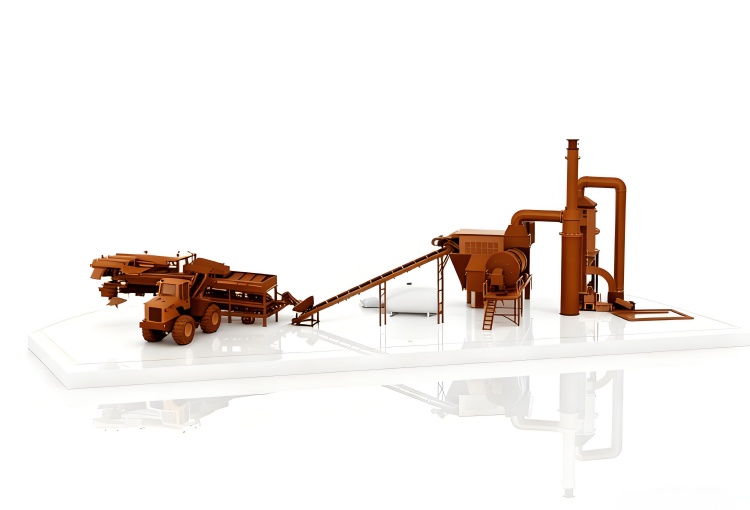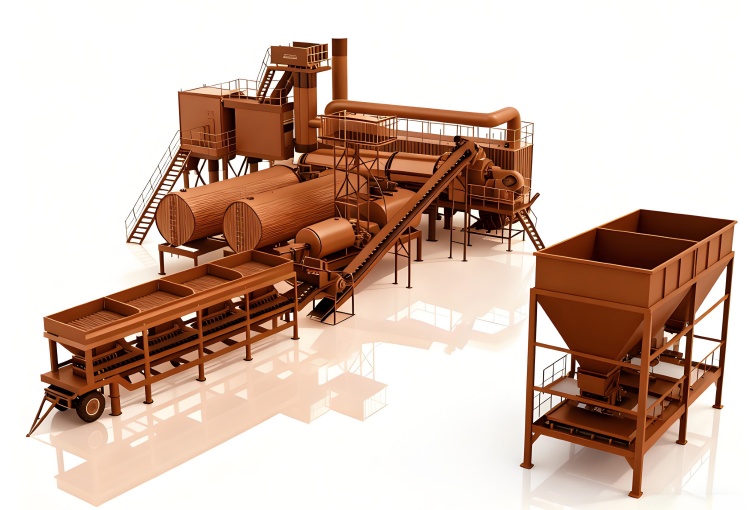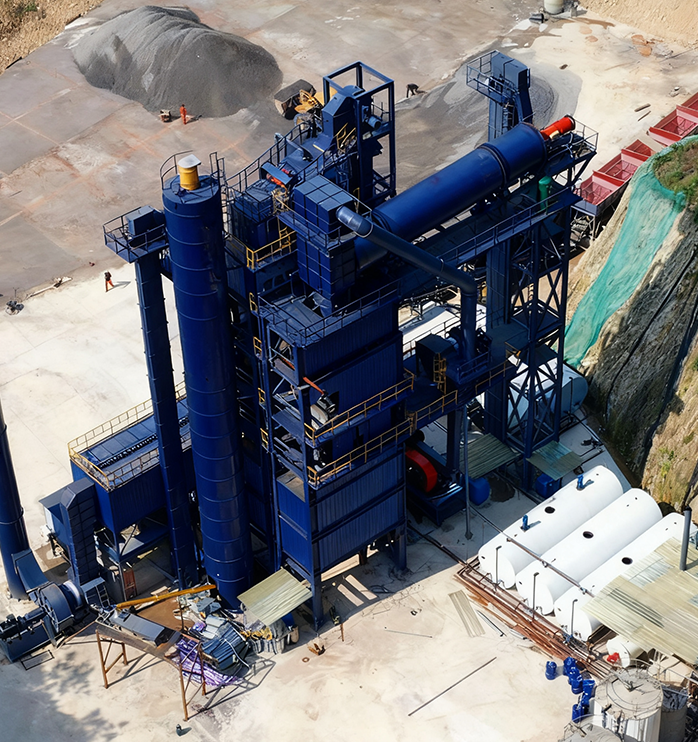Starting a concrete batching plant is one of the most strategic investments in the construction supply chain. Whether you aim to serve local infrastructure projects or large-scale commercial contractors, understanding the true cost structure is the foundation for profitability.
Interestingly, while many entrepreneurs focus on the equipment price, the total setup cost extends far beyond machinery—it includes land, utilities, logistics, automation systems, permits, and even operator training.
This article breaks down the real numbers, explores plant types, and provides practical insights to help you launch a high-performance concrete mixing plant with long-term ROI.
1. Understanding the Concrete Plant Investment Framework
Launching a concrete batching plant means building an integrated production ecosystem capable of mixing aggregates, cement, and water into high-quality concrete—reliably and efficiently.
The total investment varies depending on five key dimensions:
-
Plant Capacity – From 25 m³/h mini plants to 180 m³/h industrial-scale setups.
-
Plant Type – Mobile, stationary, or compact.
-
Automation Level – Manual, semi-auto, or fully automated control systems.
-
Location & Logistics – Proximity to aggregate suppliers and project sites.
-
Regulatory Requirements – Environmental, safety, and emissions standards.
Before committing capital, you must analyze these five variables to predict your concrete batching plant cost per cubic meter and total payback period.
2. Key Cost Categories in a Concrete Plant Setup
Every concrete mixing plant has two primary cost groups: fixed and variable.
Fixed Costs:
These are one-time investments required to set up and install the facility.
-
Land acquisition and site development
-
Plant foundation and civil works
-
Machinery and equipment purchase
-
Installation and calibration
-
Power, water, and drainage infrastructure
-
Software systems and control panels
Variable Costs:
These are recurring operational costs that change with production volume.
-
Raw materials (cement, sand, aggregate, admixtures)
-
Energy and fuel
-
Labor and management
-
Maintenance and spare parts
-
Quality control and waste handling
A successful plant owner must understand how these two interact—optimizing variable cost efficiency can dramatically shorten the return cycle.
3. Fixed Cost Breakdown
A. Land and Civil Construction
Land prices vary drastically across countries.
For example:
-
Rural India: USD $5–10 per m²
-
Southeast Asia: USD $8–15 per m²
-
Middle East industrial zones: USD $15–25 per m²
You’ll typically require 5,000–20,000 m² for a full-scale ready mix concrete plant, depending on your layout, truck paths, and storage zones.
Once land is secured, civil construction includes:
-
Concrete foundations for silos and mixers
-
Drainage and water treatment channels
-
Office and QC laboratory
-
Boundary walls and paved loading areas
Estimated cost range:
USD $100,000 – $300,000, depending on plant size and region.
B. Machinery and Equipment
Machinery forms the heart of the investment. The choice between a stationary concrete batching plant and a mobile concrete batching plant determines initial cost, setup time, and flexibility.
| Plant Type |
Typical Capacity (m³/h) |
Estimated Cost (USD) |
| Mini batching plant |
25–35 |
$30,000 – $60,000 |
| Compact plant |
50–90 |
$70,000 – $120,000 |
| Stationary plant |
90–180 |
$120,000 – $250,000 |
| Fully automatic large-scale |
180+ |
$250,000 – $450,000 |
| Mobile concrete plant |
30–75 |
$45,000 – $120,000 |
Prices depend on mixer type (twin-shaft, planetary, drum), brand (ELKON, SIMEM, SDCAD, Vince Hagan), and included accessories such as cement silos, screw conveyors, aggregate hoppers, and control panels.
Pro Tip 💡: Don’t only compare machinery prices—evaluate installation, calibration, and after-sales support, which often account for 10–15% of total project cost.
C. Power, Water, and Automation Systems
A concrete batching plant needs a stable power supply for motors, mixers, and conveyors.
Typical consumption:
Set aside $15,000–$30,000 for electrical panels, wiring, transformers, and water pumps.
Modern plants also use PLC and SCADA-based control systems, costing an additional $10,000–$25,000, depending on automation complexity.
Automation reduces human error, ensures precise batching, and allows data collection—essential for ISO certification and efficient audits.
D. Installation and Commissioning
Equipment installation, calibration, and testing generally cost 5–10% of total machinery value.
For example, installing a $150,000 batching plant may require an additional $10,000–$15,000 for mechanical alignment, wiring, and operator training.
Hiring experienced technicians during setup ensures smoother commissioning and prevents long-term mechanical imbalances.
4. Variable Cost Breakdown
Once operational, your plant incurs recurring expenses that directly affect profit margins.
A. Raw Materials
The largest share of production cost—60–70%—comes from raw materials:
Material costs vary by region, but buying in bulk and establishing long-term supplier contracts can save up to 8–12% annually.
B. Labor and Management
Efficient management minimizes idle time and maximizes output.
A typical concrete batching plant workforce includes:
Average monthly labor cost:
-
India: $3,000 – $5,000
-
Middle East: $5,000 – $8,000
-
Europe: $10,000 – $15,000
Automation can reduce staffing requirements by up to 40%, particularly when using smart control panels and automatic weighing systems.
C. Power and Fuel
Energy is another major cost driver.
Running a concrete mixing plant continuously for 10 hours per day can consume 100–200 kWh, translating to $10–$20 daily, depending on local rates.
Fuel costs for loaders and delivery trucks further add $1–$2 per cubic meter of concrete.
To reduce this, invest in energy-efficient motors, LED lighting, and optimized truck routing systems.
D. Maintenance and Spare Parts
Routine maintenance ensures equipment reliability.
Budget $5,000–$15,000 annually for:
-
Mixer blades
-
Load cell calibration
-
Conveyor belts
-
Lubricants and filters
Ignoring preventive maintenance can result in major downtime. In one concrete mixing plant in the Philippines, a single unplanned mixer breakdown led to a $7,000 loss in one week due to halted deliveries.
E. Quality Control and Testing
Every ready mix concrete plant must allocate resources to testing equipment—slump cones, compressive strength machines, and moisture analyzers.
Typical QC setup: $5,000–$10,000, plus ongoing material testing fees.
Clients today demand not just volume but traceable quality documentation—especially for government or infrastructure projects.
F. Licensing, Permits, and Insurance
Before starting production, ensure compliance with local laws:
-
Environmental clearances
-
Pollution control approval
-
Factory operation license
-
Labor and safety certificates
The total paperwork and registration cost ranges from $2,000–$10,000, depending on the country.
5. Cost Comparison Between Different Plant Types
Stationary Concrete Batching Plant
-
Pros: High output, stable performance, ideal for long-term sites
-
Cons: High land and setup cost, not portable
-
Average investment: $180,000 – $400,000
Mobile Concrete Batching Plant
-
Pros: Easy relocation, faster setup
-
Cons: Smaller output, higher wear rate
-
Average investment: $60,000 – $150,000
Mini Concrete Plant
-
Pros: Low cost, quick ROI
-
Cons: Limited production capacity
-
Average investment: $30,000 – $70,000
Ready Mix Concrete Plant
-
Pros: Suitable for commercial supply and large infrastructure projects
-
Cons: Requires strict logistics management
-
Average investment: $120,000 – $300,000
Each plant type has a different capital and operational profile. Selecting the right configuration depends on target market size, available capital, and long-term project strategy.
ROI Calculation and Cost-Per-Cubic-Meter Model
Understanding the return on investment (ROI) is crucial before starting a concrete batching plant. The main factors influencing ROI include initial capital, operational costs, production volume, and market pricing.
1. Calculating Production Cost per Cubic Meter
A realistic concrete batching plant cost analysis should account for both fixed and variable costs. For example:
| Component |
Estimated Cost per m³ |
| Raw Materials |
$45–60 |
| Labor |
$5–8 |
| Energy |
$2–3 |
| Maintenance |
$1–2 |
| Miscellaneous |
$1–2 |
Total production cost: $54–75 per cubic meter
If the market sells ready-mix concrete at $90–120 per cubic meter, profit margins can range from 20–35%, depending on efficiency.
2. Impact of Plant Type on ROI
-
Mobile concrete batching plant: Ideal for temporary projects; lower initial investment allows faster breakeven, but operating costs per cubic meter are slightly higher.
-
Stationary concrete batching plant: High initial cost but better long-term margins due to higher output and lower per-unit operating cost.
-
Mini concrete plant: Quick ROI for small local projects, suitable for contractors needing concrete batch plant near me solutions.
Case Studies
A. Mid-Scale Stationary Plant in India
-
Capacity: 90 m³/h
-
Initial investment: $180,000
-
Average monthly output: 5,000 m³
-
ROI achieved: 14 months
Operators used concrete batching plant software to schedule production, optimize truck loading, and monitor concrete batching plant calibration, ensuring consistent mix quality.
B. Mobile Plant in UAE
Flexibility allowed servicing multiple sites, reducing delivery times. Local concrete batching plant operator jobs provided skilled staff to manage operations.
Cost Optimization Strategies
Reducing costs without sacrificing quality is key for sustainable profitability.
1. Material Efficiency
-
Monitor cement, aggregates, and admixture usage per batch.
-
Implement automated dosing via the concrete batching plant control panel.
-
Reduce aggregate spillage through proper storage and conveyors.
2. Energy Management
3. Maintenance Planning
-
Track wear on mixer blades, conveyor belts, and pumps.
-
Use predictive maintenance software to minimize unexpected downtime.
-
Maintain a stock of critical concrete batching plant spare parts.
4. Staff Productivity
Common Mistakes to Avoid
-
Underestimating Setup Costs – Many buyers focus solely on equipment price and overlook installation, calibration, and land development.
-
Ignoring Layout Planning – Poor ready mix concrete plant layout increases material handling time and fuel costs.
-
Skimping on Automation – Modern concrete mixing batching plant software reduces human error and enhances reporting.
-
Neglecting Maintenance – Deferred maintenance can result in unexpected downtime and expensive repairs.
-
Hiring Unskilled Operators – Ensuring trained staff is vital; concrete batching plant operator vacancy in many regions reflects the need for skilled personnel.
Strategic Recommendations
-
Conduct a detailed feasibility study considering both capital and operational costs.
-
Choose plant type according to project scope: stationary for large urban projects, mobile for scattered infrastructure, mini for local contractor demand.
-
Invest in automation and monitoring systems: concrete batch plant software and control panels are crucial for data-driven management.
-
Implement continuous staff training and safety culture to maintain high-quality output.
Conclusion
Starting a concrete batching plant requires careful planning, precise budgeting, and strategic management. The total cost to start can range widely:
-
Mini concrete plant: $30,000–$70,000
-
Mobile concrete batching plant: $60,000–$150,000
-
Stationary concrete batching plant: $180,000–$400,000
Efficiency, automation, and proper staff training directly affect profitability. With thoughtful planning, modern concrete mixing plants can yield consistent, high-quality concrete, delivering strong ROI while meeting environmental and safety regulations.
Invest wisely, choose the right concrete batching plant type, and leverage technology to transform your investment into a sustainable, profitable venture.






